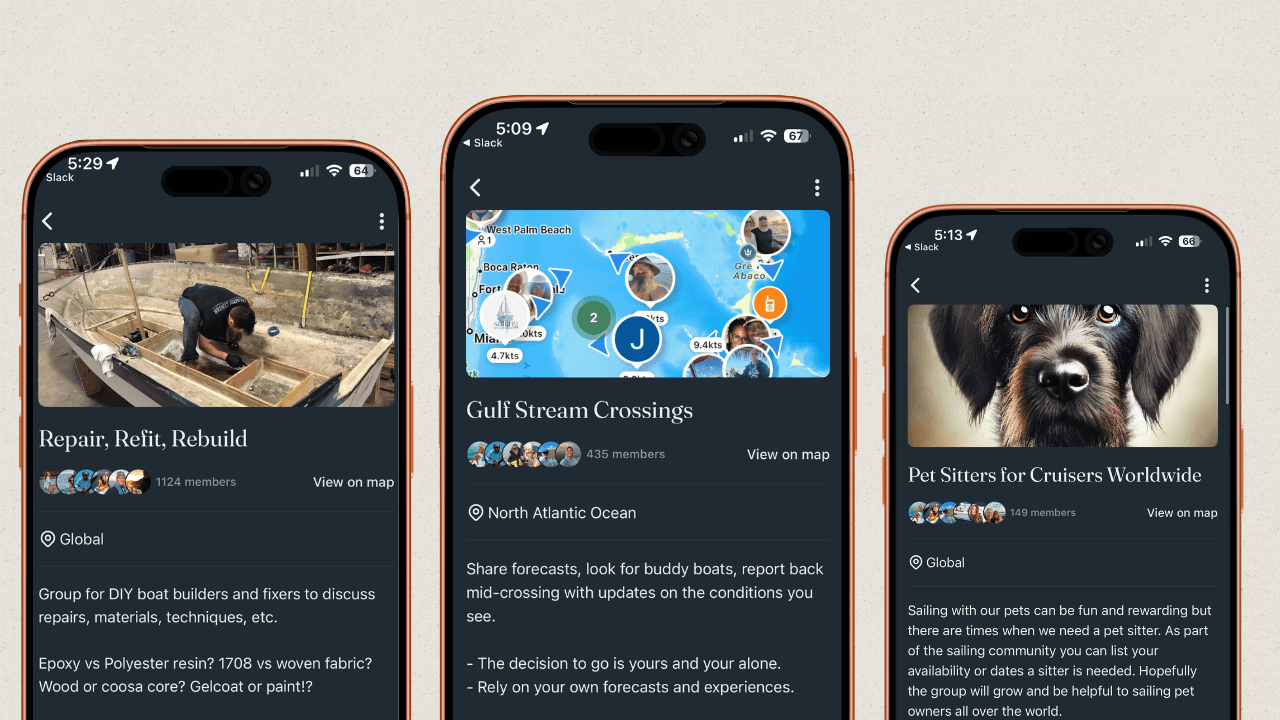The Rise of Remote Work Cruisers: How More People Are Living and Working from the Water
Community
Mar 11, 2025

A new era for work/ life balance & being on the water!
If you’ve spent time in anchorages over the past decade, you’ve probably noticed a shift in the cruising world. What was once primarily the domain of retirees enjoying their hard-earned freedom is now increasingly filled with remote workers, digital nomads, and self-employed adventurers making the sea their office.
This shift didn’t happen overnight. It’s been driven by major changes in technology, workplace culture, and the economy—each opening new doors for those who dream of sailing full-time while still earning an income. Here’s how we got here and why remote work cruising is becoming one of the biggest lifestyle movements on the water.
The Evolution of Full-Time Cruising
1. Affordable Boats Open the Door
In the early 2000s, cruising boats—especially those under 36 feet—became significantly more affordable. Baby boomers were entering retirement ages right as larger used mono-hulls, and the first generation of used catamarans, were entering the aftermarkets in large numbers. They were armed with the cash, and the timing, to drive a market for 40ft+ boats, and leave a plethora of unwanted, well-built, boats from the 70s and 80s. These vessel saw steep price drops. Online marketplaces like YachtWorld made it easier than ever to find these boats at a bargain, turning the dream of full-time sailing into an attainable reality for more people than ever before.
2. Economic Shifts and Changing Priorities
The 2008 financial crisis forced a reevaluation of traditional career paths and homeownership. Many who had grown up believing in the “safe” path—buy a house, work a 9-to-5, retire at 65—saw firsthand how fragile that system could be. As a result, alternative lifestyles, including long-term cruising, started gaining appeal. With inexpensive boats available, some took the opportunity to step away from the conventional workforce, using their savings or freelancing to support a life afloat.
3. The Rise of Remote Work
The next big shift came with the rise of remote work. Even before the global pandemic, companies were reducing office space, leveraging digital tools, and allowing employees to work from anywhere. But in 2020, with the arrival and subsequent lockdowns from COVID-19, when businesses were forced to embrace remote work at scale, a new reality emerged: you didn’t have to be tied to a physical office at all.
For many, this was the ultimate game-changer. The long-standing barrier of needing to be in one location for work was gone. If you had a reliable internet connection, you could take your career offshore—literally.
4. Starlink Changes Everything
For years, connectivity was one of the biggest challenges for remote workers wanting to live on a boat. While cell service and mobile hotspots helped in coastal areas, coverage was unreliable, expensive, and limited when venturing further offshore. Enter Starlink.
With high-speed satellite internet that works in most anchorages and even underway, Starlink has made working from a boat as seamless as working from a land-based home. Whether you’re in the Bahamas, French Polynesia, or a secluded cove in the Pacific Northwest, you can now take Zoom calls, upload large files, and stay connected without the stress of searching for WiFi.
The Growing Appeal of a Sea-Based Lifestyle
With fewer barriers than ever, remote work cruising is becoming increasingly mainstream. Social media platforms like YouTube and Instagram have further fueled this movement, showcasing the possibilities of life at sea and proving that cruising isn’t just for those in retirement—it’s for anyone with the drive to make it work.
Work-Life Balance on the Water
Of course, working while cruising comes with its own set of challenges. Staying productive in a floating office and managing time zones with co-workers; to name a few. But for those who find the right balance, the rewards are undeniable—mornings spent paddleboarding before work, sunset sails after meetings, and the freedom to explore new destinations without being tied to a single location.
Join the Future of Cruising with SeaPeople
As more people embrace this lifestyle, the need for tools that support remote work cruisers has never been greater. That’s where SeaPeople comes in.
Whether you’re looking to find other cruisers nearby, track and share your journeys, discover remote work-friendly anchorages, or connect with like-minded sailors, SeaPeople makes it easy to navigate this new era of cruising.
The world of full-time sailing is evolving fast—don’t just watch it happen. Be a part of it. Download SeaPeople today and start your journey.
This blog post is an adapted and abridged version of a long form article written by SeaPeople co-founder Logan Rowell and published by Latitudes & Attitudes Magazine.




